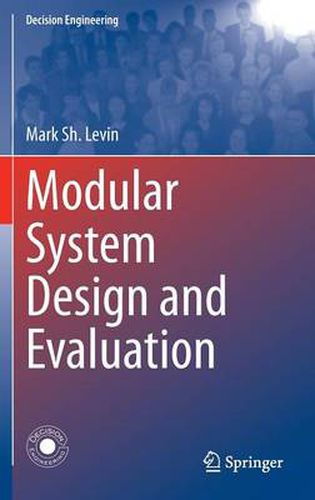Readings Newsletter
Become a Readings Member to make your shopping experience even easier.
Sign in or sign up for free!
You’re not far away from qualifying for FREE standard shipping within Australia
You’ve qualified for FREE standard shipping within Australia
The cart is loading…






This title is printed to order. This book may have been self-published. If so, we cannot guarantee the quality of the content. In the main most books will have gone through the editing process however some may not. We therefore suggest that you be aware of this before ordering this book. If in doubt check either the author or publisher’s details as we are unable to accept any returns unless they are faulty. Please contact us if you have any questions.
This book examines seven key combinatorial engineering frameworks (composite schemes consisting of algorithms and/or interactive procedures) for hierarchical modular (composite) systems. These frameworks are based on combinatorial optimization problems (e.g., knapsack problem, multiple choice problem, assignment problem, morphological clique problem), with the author’s version of morphological design approach - Hierarchical Morphological Multicritieria Design (HMMD) - providing a conceptual lens with which to elucidate the examples discussed. This approach is based on ordinal estimates of design alternatives for systems parts/components, however, the book also puts forward an original version of HMMD that is based on new interval multiset estimates for the design alternatives with special attention paid to the aggregation of modular solutions (system versions). The second part of ‘Modular System Design and Evaluation’ provides ten information technology case studies that enriches understanding of the design of system design, detection of system bottlenecks and system improvement, amongst others. The book is intended for researchers and scientists, students, and practitioners in many domains of information technology and engineering. The book is also designed to be used as a text for courses in system design, systems engineering and life cycle engineering at the level of undergraduate level, graduate/PhD levels, and for continuing education. The material and methods contained in this book were used over four years in Moscow Institute of Physics and Technology (State University) in the author’s faculty course System Design .
$9.00 standard shipping within Australia
FREE standard shipping within Australia for orders over $100.00
Express & International shipping calculated at checkout
This title is printed to order. This book may have been self-published. If so, we cannot guarantee the quality of the content. In the main most books will have gone through the editing process however some may not. We therefore suggest that you be aware of this before ordering this book. If in doubt check either the author or publisher’s details as we are unable to accept any returns unless they are faulty. Please contact us if you have any questions.
This book examines seven key combinatorial engineering frameworks (composite schemes consisting of algorithms and/or interactive procedures) for hierarchical modular (composite) systems. These frameworks are based on combinatorial optimization problems (e.g., knapsack problem, multiple choice problem, assignment problem, morphological clique problem), with the author’s version of morphological design approach - Hierarchical Morphological Multicritieria Design (HMMD) - providing a conceptual lens with which to elucidate the examples discussed. This approach is based on ordinal estimates of design alternatives for systems parts/components, however, the book also puts forward an original version of HMMD that is based on new interval multiset estimates for the design alternatives with special attention paid to the aggregation of modular solutions (system versions). The second part of ‘Modular System Design and Evaluation’ provides ten information technology case studies that enriches understanding of the design of system design, detection of system bottlenecks and system improvement, amongst others. The book is intended for researchers and scientists, students, and practitioners in many domains of information technology and engineering. The book is also designed to be used as a text for courses in system design, systems engineering and life cycle engineering at the level of undergraduate level, graduate/PhD levels, and for continuing education. The material and methods contained in this book were used over four years in Moscow Institute of Physics and Technology (State University) in the author’s faculty course System Design .